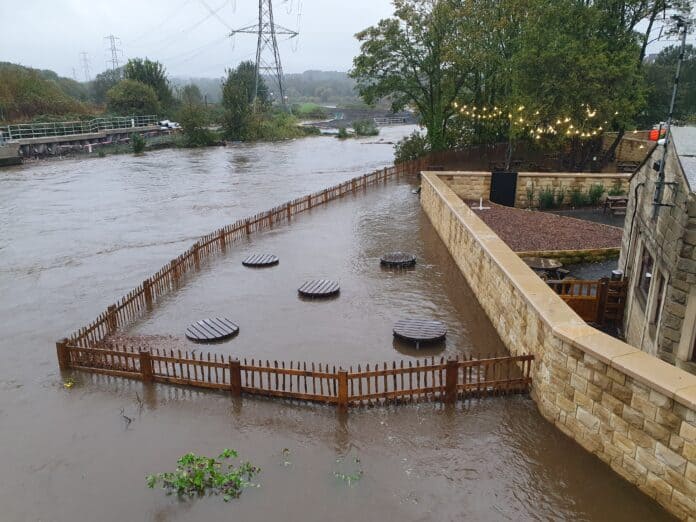Construction continues to progress on flood defences in West Leeds as part of the Leeds Flood Alleviation Scheme Phase 2 (Leeds FAS2).
Due to complete in Spring 2024, the scheme will protect a further 1,048 homes, 474 businesses and key infrastructure along a 14km stretch from Leeds City Station to Apperley Bridge and follow the Boxing Day 2015 floods caused by Storm Eva, which led to widespread flooding as the River Aire broke its banks along the Kirkstall corridor.
When it is complete, the scheme will reduce the risk of flooding to a 0.5% chance of occurring in any given year, including a climate change allowance. The area currently protected by Leeds FAS1 will also have its level of protection doubled from a 1% chance to a 0.5% chance of flooding occurring in any given year.
There were recent examples of increased protection for areas of Kirkstall and Newlay during storm Babet – including the completed section at the Redcote Lane substation – but the scheme will not provide significant protection until it is fully complete.
Since 2015, Leeds City Council and the Environment Agency have completed a range of schemes to improve the flood resilience of the city. Examples include the multi-million-pound Leeds Flood Alleviation Scheme Phase 1 (Leeds FAS1) in Leeds city centre, as well as schemes at Otley, Killingbeck, Garforth, Mickletown and Cottingley.
Schemes to reduce flooding impacts from Meanwood Beck, Wortley Beck, Sheepscar Beck, Thorner Beck and in Potternewton are under development.
The concentrated number of named storms and high rainfall, high winds, and wintry conditions at the end of the year are a cause for concern.
Since July 2023, the average monthly rainfall in Leeds has exceeded the national average of the last 30 years, with heavy rainfall in July, October & November. The Leeds FAS1 was operated for the ninth time since its completion during storm Babet and was close to being needed again this weekend as storms Elin and Fergus made their way across the country.
It is for this reason, that all residents should remind themselves of how they can prepare for flooding. That includes flooding to homes and businesses, as well as how to stay safe when travelling in times of flooding.
Councillor Helen Hayden, Leeds City Council’s executive member for sustainable development and infrastructure, said: “We have seen some important milestones on the Leeds Flood Alleviation Scheme this year, and I would like to thank everyone working on the scheme for their hard work, as well as all the landowners and residents who have worked with us to ensure that this state-of-the-art feat of engineering becomes a reality. It is a vital part of the plan to ensure that thousands of people and livelihoods in Leeds are more resilient to the increased threats of the climate emergency.
“Many of us remember the events of Boxing Day 2015, and it is important to say that with the Leeds FAS1 fully operational, we are far more resilient to flooding than we were then. However, we have experienced a lot of rain this year, with more on the way – which further highlights the necessity of the work we continue to do on Leeds FAS2, as well as the other schemes across Leeds.
“It also serves as a prompt reminder that there are steps that we can all take to increase our own resilience should the worst happen. Please take the time to review the actions listed above so that you can be as prepared as possible.”

